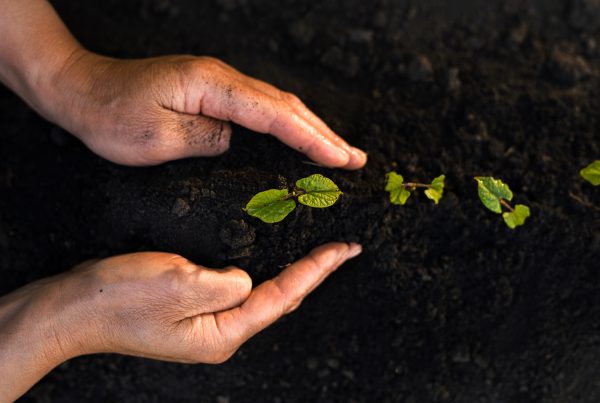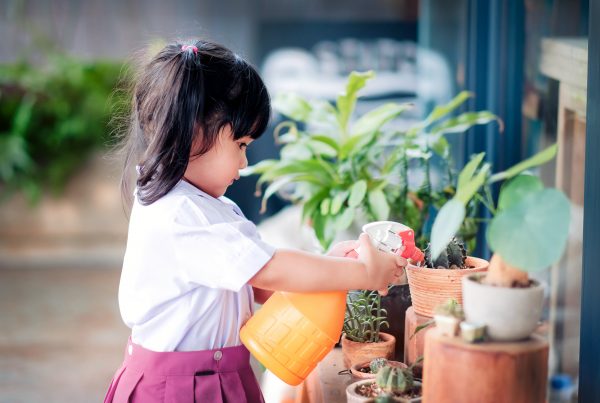Find yourself doom-scrolling through the news of ice caps melting? Fear the ramifications of our ocean levels rising? No longer shocked by the once-in-100-year weather events occurring with unnerving frequency across the world?
The undeniable environmental effects of global warming often feature in news headlines, and with these truth bombs, it’s easy to feel helpless and discouraged. However, there is something that offers hope in an otherwise bleak outlook on the planet’s future.
We’re talking about the invention and ever-more widely spread use of bioplastic products.
Bioplastic is precisely what the name says: a product with all the desirable traits of petroleum-based plastics made entirely of biodegradable organic materials.
Traditional plastics are problematic for a multitude of reasons, and in this article, we reveal some of these environmental woes and explain why bioplastics are a superior option.
Bioplastics reduce our reliance on fossil fuels.
The production of traditional plastics relies heavily on fossil fuels. It accounts for a significant portion of global petroleum consumption and perpetuates our dependence on nonrenewable resources. On the other hand, bioplastics are made from renewable sources like corn starch, tapioca or sugarcane. By transitioning to this sustainable alternative, it can help reduce the depletion of the earth’s finite resources.
Bioplastics improve our carbon footprint.
The extraction and processing of petroleum to produce plastic contributes to greenhouse gas emissions and releases carbon into the atmosphere, accelerating all the symptoms of global warming. Comparatively, bioplastics have significantly fewer greenhouse gas emissions over their lifetime. Minimal processing happens during production, and there’s also no net increase in carbon dioxide in the atmosphere when they break down because the plants they’re made from absorb the same amount of carbon dioxide as they grow. For this reason, bioplastics are a more sustainable option for companies trying to reduce their environmental footprint.
Bioplastics keep the earth safe and clean.
Where plastics often take hundreds of years to decompose and often leech toxic chemicals into the surrounding environment, bio-friendly plastics are made from organic materials. They break down quickly and easily after use into essential elements that the earth can use to replenish itself and won’t leave any toxic residue behind. In this way, they keep the surrounding ecosystem safe and reduce the amount of plastic pollution on the land and in oceans and rivers.
Bioplastics don’t create microplastics.
Tiny plastic partials called microplastics are everywhere, from the tops of the tallest mountains to the bottoms of the deepest parts of the ocean, and they’ve now even been discovered inside the human body. The ramifications of plastic in our bloodstream and internal organs are yet to be determined, but there’s no doubt it’s an unnerving thought.
Microplastics aren’t an issue with bio-products. Bioplastic bags and other certified compostable items decompose within months without leaving any little bits behind.
Bioplastics have a closed-loop system.
Designed to return harmlessly to the earth, bioplastics are made from plant-based resins and decompose into nutrient-rich fertiliser for the garden. Unlike most quickly used, quickly disposed plastic products, certain bioplastic items can be used repeatedly before being disposed of into the compost. This reusability significantly extends the material’s lifespan and reduces the demand for similar single-use plastics. Over time, this reduced consumer demand will start to stem the production of unnecessary plastic items.
The materials used to create the bioplastic dictate how it needs to be disposed of. It’s always best to check the information printed on the product for instructions on whether it can go into the home compost or needs to go to a local industrial composting facility.
Interest in bioplastics drives more research & innovation.
As consumer awareness about the issues caused by plastic spreads, there’s an increasing demand for eco-friendly products and packaging. This continued interest in bioplastics has fuelled further research into environmentally friendly materials and much-needed product innovation.
More sustainable products on the market mean more breadth in the product range available to rival what’s already offered in plastic. Over time, these eco-friendly alternatives will become easier to access and cheaper for consumers to buy.
Bioplastics shape new policies & incentives.
There is growing support for bioplastics as sustainable alternatives to plastic. Governments around the world, alongside regulatory bodies, promote bioplastics through their policies and incentive schemes, like banning plastic grocery bags in supermarkets and providing compostable dog poop bags at local parks. All of these initiatives aim to reduce plastic waste and help increase the adoption of bioplastics.
While they may not have the power to save the world on their own, bioplastics hold great promise in reducing our reliance on fossil fuels, lowering carbon emissions, and stemming plastic pollution in landfills and waterways. As a much more sustainable alternative to traditional plastic, bioplastic can make a meaningful contribution to our efforts to improve the planet.




